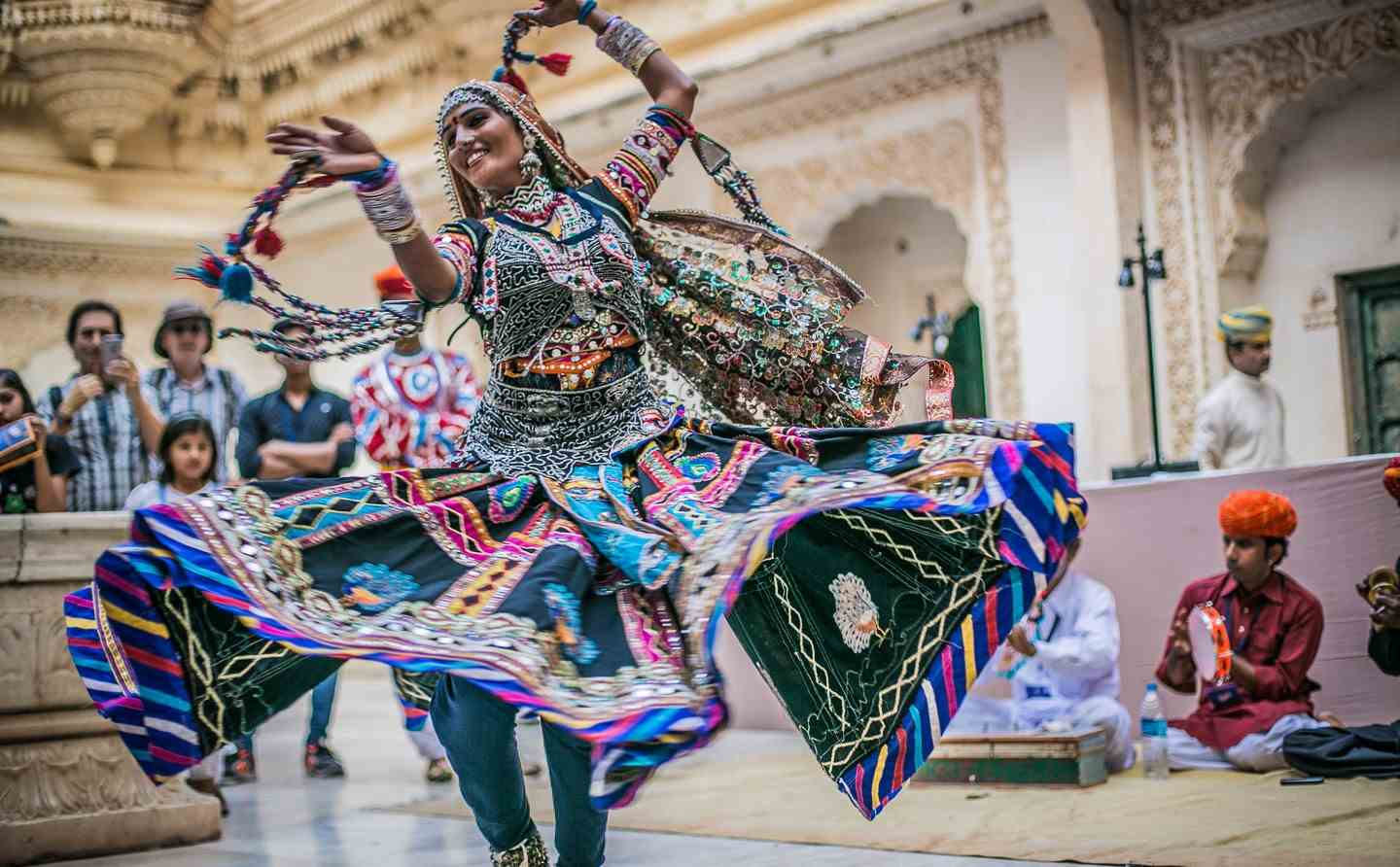The traditions and culture of India are now well known around the world. We all think of India’s traditions and rituals as being quite varied and distinctive. But we rarely consider the reasons behind why things are carried out in particular ways. Indian culture is rich in numerous unusual practices and traditions that foreigners may find fascinating. The majority of these come from the ancient Unique Culture of India writings and scriptures, which have governed Indian culture for thousands of years.
1. The Namaste greeting
One of the most well-known Indian practices, the Namaste, is no longer limited to Indian soil. Barack Obama has been spotted doing it on numerous occasions, and on the first International Yoga Day in New York City, UN Secretary-General Ban Ki-Moon greeted everyone with a namaste in Times Square.
One of the five types of customary greetings listed in the ancient Hindu texts, the Vedas, is the namaste, also known as namaskar or ‘namaskar. It means “I bow to you,” and when two people give each other this greeting, it means “May our brains connect,” as shown by the hands folded in front of the chest. The phrase “na ma” (not mine) can also be used to translate the word “Namaha,” which refers to lowering one’s ego in the presence of another.
2. Holidays and Religion
India hosts a lot of festivals as well, primarily due to the diversity of its population. Christians observe Christmas and Good Friday, Muslims observe Eid, Christians observe Christmas, Sikhs observe Baisakhi (crop harvesting), Sikhs observe the birthdays of their Gurus, Hindus observe Diwali, Holi, Makar Sakranti, Jains observe Mahavir Jayanti, Buddhists observe Buddha Poornima, and the list goes on and on. All of these, of course, qualify as holidays in our book.
3. Family Organization: Joint Families
The idea of a joint family, in which the entire family lives together (parents, wife, kids, and occasionally even relatives), is also prevalent in India. This is mostly attributable to the cohesiveness of Indian society, which is also said to aid in managing stress and strain.
4. Fasting symbols
Hindu culture includes fasting in its entirety. Fasts, vrats, and upvas are ways to show the Gods and Goddesses your sincerity, resolution, or appreciation. Around the nation, people follow fasts for a variety of religious events. Some individuals will also fast on other days of the week in honor of the God or Goddess that is linked with that particular day. Many people hold the opinion that by doing this, you are depriving your body of a basic need and torturing yourself in order to atone for the sins you have committed up until the fast day.
A rapid’s rules and regulations are appropriate for the specific situation. The Vedic rite of lighting the sacrificial fire for sacrifice purposes is likely where the fast had its start. It can be assumed that individuals observed fasts when they had to start or restart the domestic fires kept in their homes to make daily sacrifices because the word “upvas” has been used to refer to both fasts and kindling sacrificial fire.
5. Religious Practices: Holy Cow
In Hindu tradition, the cow is revered as a holy animal. She is revered as a motherly figure and is a representation of Mother Earth’s abundance. Lord Krishna is frequently seen playing his flute among cows and Gopis (milkmaids) dancing to his tunes. Lord Krishna grew up as a cow herder. Curiously, Lord Krishna is also referred to as “Govinda” or “Gopala,” which means “friend and protector of cow” in Sanskrit. Cows are therefore associated with good fortune in Hindu culture and religion.
6. The Science of Architecture: Temples
The majority of temples are situated along the Earth’s magnetic wave lines, which helps to maximize the positive energy that is accessible. Under the main deity, a copper plate known as Garbhagriha or Moolasthan absorbs and reverberates this energy to its surroundings. Coming to the temple frequently aids in cultivating positive thoughts and energy, which in turn promote healthier functioning.
Also, it is customary to remove shoes before entering places of worship because doing so would contaminate the space’s otherwise clean and holy environment.
7. Arrangement-Based Marriage System
In India, arranged marriages have a long history that dates back to the Vedic era. The bride would be given a ceremony known as the “Swayambar” for royal families. The bride was invited to invite her dream husband, or suitable matches from all around the kingdom were invited to either compete in some tournament to win over the bride. Arranged marriage is still a popular idea in India and is deeply ingrained in “Indian Traditions” today.
8. Symbols of religion
There are several signs and symbols with varied meanings throughout Indian traditions and texts. For instance, the Swastika is not associated with Adolf Hitler or Nazism in the Indian setting. It represents Lord Ganesha, the obstacle-buster. The Swastika’s arms represent a variety of things. The four Vedas, the constellations, or the four main goals of human endeavor are represented by them.
9. Customs and Traditions – Atithi Devo Bhavah
The proverb “Atithi Devo Bhavah” is also important in India. It signifies that the visitor is equal to God. It is a Sanskrit verse that was taken from Hindu scriptures and then included in the “Code of Conduct for Hindu Society” because in Indian culture, guests have always been given the utmost respect.
10. India’s Dresses: Indian Ethnic Clothing
Indian women are frequently spotted wearing’saris’. The sari is a single piece of material that doesn’t require any sewing; it’s simple to produce, comfortable to wear, and it complies with religious customs. It was originally a Hindu custom, but it has gracefully expanded to all other religions. The same holds true for Indian men of all faiths’ more practical “Kurta-Pyjama” and formal “Sherwani” attire.
11. Indian Dances
India is a country that values “unity in variety,” and this is also true of our dances. Various dance styles—classified as folk or classical—have their roots in various regions of the nation and serve as a means of expressing the particular culture from which they come. The Hindu Sanskrit scripture “Natyashashtra,” which is a text of performing arts, makes mention of eight classical dances that are categorized as Indian classical dances:
Tamil Nadu’s Bharatnatyam
Kerelian Kathakali
North, West, and Central Indian Kathak
From Kerela, Mohiniyattam, and Andhra Pradesh, Kuchipudi
Oddisi from Odhisa Sattriya from Assam Manipuri from Manipur




